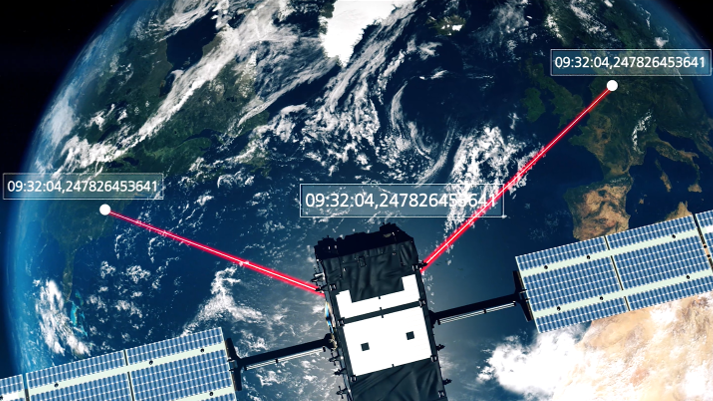Optical Frequency Metrology

Atomic quantum sensors offer unprecedented accuracies for a broad range of metrological tasks, in particular for the measurement of time and frequency. The Optical Frequency Metrology department develops compact, robust and energy-efficient quantum sensors for mobile or space-based applications.
The advances in quantum engineering have enabled frequency metrology with unprecedented accuracy, allowing us to determine frequencies with a relative uncertainty of below one part in 1018. This accuracy makes it possible to precisely detect differences in the terrestrial geopotential through gravitational redshift in a clock comparison. State of the art laboratory optical clocks have reached measurement resolutions corresponding to a height difference in the geopotential of 1 cm on Earth, outperforming classical geodetic techniques. This sparks discussions of a new access to the geoid and the precise linking of physical height systems over very large distances and paves the ground for a novel height reference system based on optical clocks that is more stable, reproducible, global, and maintainable compared to todays employed approaches. The additional information provided by optical clocks will revolutionize our understanding of Earth, including societally relevant phenomena such as sea level rise, ice-mass loss, post glacial rebound, mass balance and much more, in particular when combined with data from quantum gravimeters.
Optical clocks of the highest accuracy on satellites open up further completely new perspectives, including the realization, dissemination and synchronization of time worldwide with a substantially improved precision for applications in science and technology. In the future, space based optical clocks can improve the performance of global satellite navigation systems and further expand their capabilities.

The department Optical Frequency Metrology develops optical clocks for their operation on Earth and in space. This development specifically targets a reduction of the size, improved energy efficiency and robustness, temperature insensitivity, and self-sustained operation. For example, the project InnoVaQ aims at the integration of a vacuum system with an atomic source in a compact setup as a core component for future compact optical clocks.
Further specific activities of the department comprise the application of the technological developments in the broader range of quantum technology, including the entanglement-enhanced operation of atomic quantum sensors (INTENTAS), the development of integrated electronic components for quantum sensors with a novel GNSS-based frequency reference (KOFREF) and the construction of integrated atomic source systems (KOAQS).
